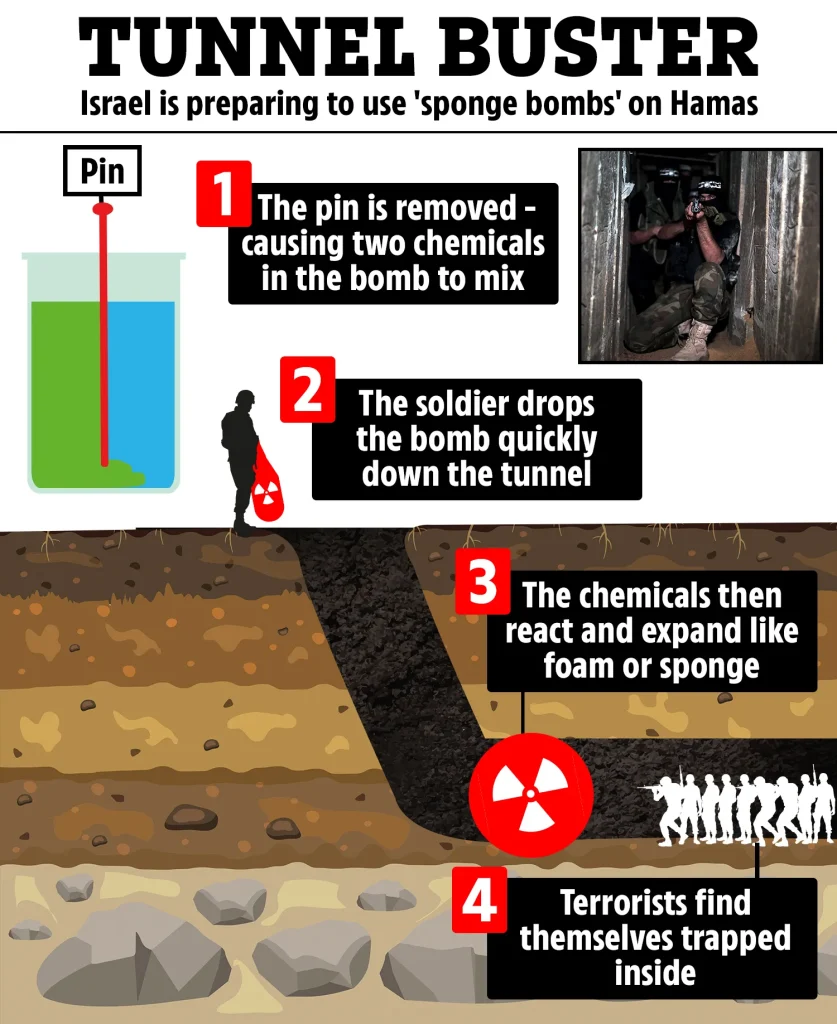Table of Contents
This Post Is Recently Updated on Oct 29, 2023 @ 8:57 am by TBB Desk
1. A Look Inside the Gaza Tunnels
2. Understanding the ‘Gaza Metro’ System
Hamas began tunneling in the mid-1990s. Following the withdrawal of Israeli troops and settlers from Gaza and Hamas’ subsequent electoral victory in 2006, their efforts accelerated. These tunnels, which can be hundreds of kilometers long and reach depths of up to 80 meters, run beneath Gaza and its borders. Given the vastness and complexity of the ‘Gaza Metro,’ any Israeli ground offensive will almost certainly face intense urban warfare challenges.
3. IDF’s Move Against Hamas Tunnels
As the conflict between Israel and Hamas escalates, the Telegraph reports that the Israel Defense Forces (IDF) are planning to use “sponge bombs” to navigate Hamas’ intricate tunnel system beneath Gaza. These decisions come as Israeli forces expand their incursions into Gaza, which have been marked by continuous bombardment since the conflict began on October 7.
4. The “Sponge Bombs'” nature and application

Sponge bombs are not your typical explosives, despite what the name might imply. These chemical bombs, once activated, release a foam that expands rapidly and then solidifies, thereby sealing gaps in the tunnels. Although reports provide information about this technology, Israel has not yet released any official statements on “sponge bombs.” It is noteworthy that the IDF uses makeshift tunnels near the Gaza border at the Tze’Elim army base as training grounds.
These unique devices comprise two separate liquid compartments within a plastic bag, divided by a metal pole. Prior to deploying the bomb, this pole is removed, causing the two liquids to combine and initiate the foam’s rapid expansion, effectively blocking tunnel pathways. This strategy aims to protect soldiers from ambushes. However, the use of this liquid emulsion isn’t without risks, as mishandling has reportedly caused injuries, including vision loss, among some Israeli soldiers.

5. Israel’s Tactical Approach to Gaza Tunnels
Reports suggest that the IDF’s engineering corps has formed specialized teams trained for tunnel reconnaissance, equipped with advanced tools like ground-penetrating radar, aerial sensors, and unique drilling systems. Furthermore, in the pitch-black conditions of these tunnels, where the ‘sponge bombs’ might block natural light, Israeli troops plan to use thermal technology. The IDF is also expected to incorporate novel radios designed for extreme underground conditions and might even deploy robots, drones, and micro-drones to assist in tunnel navigation.
According to the New York Times, there may be a significant number of Hamas militants stationed within these tunnel systems, which has Israel worried about possible difficulties that their troops may encounter despite their superior technological capabilities.












